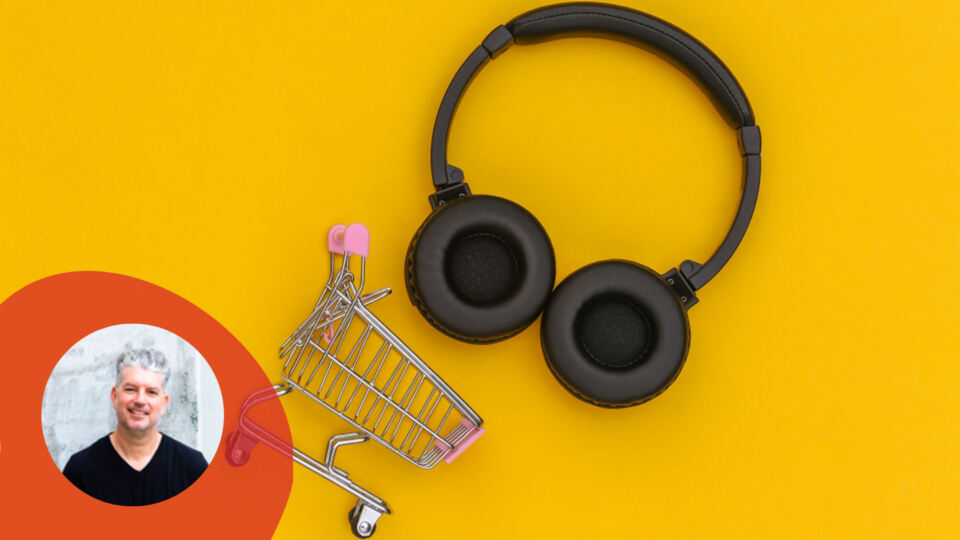It’s no secret that in-person shopping is a multi-sensory experience. How a retail space makes someone feel in terms of comfortability has a surprising effect on how much they will likely spend. While most know that it’s important to make a store visually appealing, including proper lighting and designing an interior layout that’s easy to navigate, many often forget the other senses that play a key role in the overall shopping experience — like sound.
Noise and poor acoustics in retail environments can be distracting and irritating, which can drive customers away. Sounds like overbearing music, the noise of foot and/or road traffic or even other loud shoppers can be a distraction to customers. Unlike vision or touch, sound is much more difficult to control as it spills across thresholds and enters into spaces where it’s sometimes unwelcome.
When a space has poor acoustics, the unwanted sounds reverberate. This is when sound waves travel from their source through a space and encounter a hard surface such as a wall or ceiling. A part of the sound will be absorbed, but part will be reflected back into the space, which will cause an echo and is oftentimes referred to as “noise clutter.”
Some shoppers will avoid noisy or loud retail spaces altogether, while others might feel rushed — even if it’s subconsciously — making their shopping experience faster than they would have liked. A shorter store dwell time will lead to a decrease in sales. Studies have shown that unpleasant sounds or “noise clutter” in retail stores and supermarkets can reduce sales by nearly 30%.
From a retail staff perspective, the store’s team members spend a much longer period in the store than customers. Staff members are required to tolerate all of the store’s noise and acoustics — both good and bad — which can potentially lead to increased levels of discomfort. In-store staff are the public face of the retail company with varying duties and responsibilities like interacting with customers, handling finances and carrying out stock control.
With that said, it’s important to create an environment where their concentration and efficiency levels are set up for success. The soundscape of the store can play a large role in creating a space that fosters high performance. A great acoustic environment will allow retail staff to better engage with customers and provide improved service, which will lead to an increase in sales.
Taking into consideration the comfortability of both the shoppers and the staff members, many retailers are working to improve their store’s acoustics by seeking solutions that absorb reverberation. Thankfully, the installation of acoustic lighting fixtures has been shown to reduce ambient noise by as much as 40% in echoey spaces, like expansive retail environments.
In addition to serving as an ambient light source, acoustic lighting can soften the background noise or remove echo entirely. This cuts down unwanted noise and increases the capacity to hear good sounds — like customer conversations — allowing staff to interact better and respond to queries. This ultimately creates a happier, more comfortable shopping experience.
Beyond its effective noise reduction and expansive lighting output, acoustic lighting also offers flexibility in both design and installation. While padded carpets and ceiling tiles may seem like a more obvious choice for acoustic solutions, this doesn’t always match the aesthetics or design intent of the space. Acoustic lighting is offered in a selection of beautiful and creative designs that blend into a plethora of spaces.
These fixtures are also a great option for refits and refurbs where many of the existing surfaces cannot be changed — making it a great opportunity to take advantage of the unused void between the store merchandise and the ceiling. Most quality acoustic lighting fixtures are also durable, long-lasting and incredibly easy to maintain. Contrary to its appearance, popular PET acoustic material is flat and smooth, which eliminates the issue of attracting and catching dust and debris. Acoustic lighting fixtures are easy to clean, making them an ideal option for public retail spaces.
While there are ways to master the balance of ambience and audibility, contemporary acoustic lighting fixtures efficiently blend form and function into stylish lighting fixtures that double as sound management tools. Acoustic lighting solutions have created a niche market to help architects and designers reimagine open spaces, such as retail environments. These solutions are cost-effective, sustainable, easy to install and they keep patrons coming back. Acoustic lighting fixtures allow businesses to focus on what they do best — creating exceptional experiences for their customers.
Jason Bird is Founder and Managing/Creative Director of Luxxbox. He founded Luxxbox in 2006, designing and manufacturing furniture, lighting and objects for both commercial and domestic use. His career launched in architectural lighting in Australia before relocating to the U.S. and designing for several major U.S. manufacturers. Returning home to his own practice he focused on designs embodying a visual display of strength which explore negative space. Using unconventional materials, industrial finishes, colors and production techniques, they push boundaries to make a unique style statement. Bird’s intimate knowledge of lighting design and manufacture have also seen him receive international awards for his large-scale public and custom lighting installations. Luxxbox has become a major manufacturer exporting his designs throughout Asia, Europe and North America.
Source: How Acoustic Solutions Can Enhance In-Person Shopping Experiences – Retail TouchPoints













